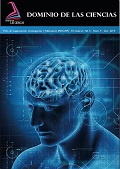The effect of differentiated instruction on the development of reading comprehension skills in EFL beginner students
DOI:
https://doi.org/10.23857/dc.v5i4.1045Palabras clave:
Differentiated instruction 1, reading skills 2, reading literacy 3, learning styles 4.Resumen
The purpose of this study was to investigate the effect of Differentiated Instruction (DI) on the development of reading skills in English as Foreign Language (EFL) beginner undergraduate students, as well as to evaluate their perceptions of the effectiveness of DI on reading lessons. The sample was made up of 69 Ecuadorian EFL learners, divided in two groups: 36 students who were part of the experimental group, and 33 from the control group. The research instruments were a diagnostic reading test, a Pre-test and a Post-test on reading comprehension skills, and an exit survey about students’ opinions about the use of DI in the EFL classroom. The research results showed that before intervention, in the diagnostic reading test, both groups had a low percentage of reading understanding, while the post-test results were significantly higher. Additionally, the students acknowledged the effectiveness of DI as a tool for teachers to meet the learners’ individual needs and interests, as well as a way to generate opportunities to develop reading abilities at a literal level. Students agreed that DI motivated them to read in English and boosted their self-confidence to do it aloud. Therefore, it can be said that DI is as an effective and motivating methodology that can be implemented in the EFL classroom for the development of reading comprehension skills.
Citas
Anderson, N. (2009). ACTIVE reading: The research based for a pedagogical approach in the reading classroom. In Second language reading research and instruction: Crossing the boudaries. (pp. 117- 143). MI: University of Michigan Press.
Brown, H. D. (2001). Teaching by Principles an Interactive Approach to Language Pedagogy. White Plains, NY: Logman.
Ching, k. L. (2015). The Use of EFL Reading Strategies among High School Students in Taiwan. The Reading Matrix: An International Online Journal., 156.
Doungphummes, N., & Chandransu, N. (2016). Approaches to Enhance English Communicative Competence of A Synthetic Account of Targeted Research Series in English Learning Promotion. Journal of Language and Culture, 35(2), 77-96.
Duke, N. K., & Pearson, P. (2002). Effective Practices for Developing Reading Comprehension. In Alan E. Farstrup & S. Jay Samuels (Eds.), What Research Has to Say About Reading Instruction (3rd ed., pp. 205-242). Newark, DE: International Reading Association, Inc.
Folse, K. (2010). Is explicit vocabulary focus the reading teacher´s job? Reading in a Foreign Language, 22-139-160.
Goodman, K. (1970). Reading: A psycholinguistic guessing game. In Brown, H. D. (3rd ed.), Teaching by principles: An interactive approach to language pedagogy (pp.357-389). Oxford, UK: Pearson Longman Hayes, D. (2014). The Value of Learning English in Thailand and its Impact on Thai: Perspectives from University Students. Asia Pacific Journal of Education, 36(1), 73-91.
Herrera, V. (12 de diciembre de 2018). Resultados de la Evaluación PISA-D plantean varios retos en educación. Obtenido de El COMERCIO: https://www.elcomercio.com/actualidad/resultados-evaluacion-pisa-retos-educacion.html
INEC. (October). May 2015. Retrieved from: http://www.inec.gob.ec/documentos_varios/presentacion_habitos.pdf
Jackson, S. (2009). Research Methods and Statistics: A Critical Thinking Approach 3rd edition. . Belmont, CA: Wadsworth.
Krashen, S. (1987.). Principles and Practice in Second Language Acquisition. Prentice-Hall International.
Nunan, D. (2005). The Nature of Reading Comprehension. In Designing Tasks for the Communicative Classroom (pp. 32-33). Sydney: Cambridge University Press.
Roy, A., Guay, F., & Valois, P. (2013). Teaching to address diverse learning needs: Development and validation of a differentiated instruction scale. International Journal of Inclusive Education, 17, 1186–1204.
Solí©, I. (1998). Estrategias de lectura. Barcelona: Graí².
Staff, S. I. (DECEMBER 7, 2017). Which country has the best readers? Obtenido de SI NEWS: https://www.studyinternational.com/news/best-readers-world/
Stavroula Valiandes and Lefkios Neophytou (2018) Teachers’ professional development for differentiated instruction in mixed-ability classrooms: investigating the impact of a development program on teachers’ professional learning and on students’ achievement, Teacher Development, 22:1, 123- 138, DOI: 10.1080/13664530.2017.1338196
Strauss, V. (November 1 ,2016). The adult literacy crisis. The Washington Post, págs. 1-2.
Thousand. J., Villa, R. Nevin, A. (2007). Differentiated instruction: collaborative and teaching for universally designed learning. USA: Corwin press.
Tomlinson, C.A., Brighton, C., Hertberg, H., Callahan, C.M., Moon, T.R., Brimijoin, K., Reynolds ds, T. (2003). Differentiating instruction in response to student readiness, interest, and learning profile in academically diverse classrooms: A review of literature. Journal for the Education of the Gifted, 27, 119–145.
UNESCO. UNESCO Institute for statistics. (2017). 617 million children and adolescents are not getting the minimum in reading and math. Montreal: UNESCO Institute for Statistics.
Whalon, K. J., Otaiba, S. A., & Delano, M. E. (2009). Evidence-based reading instruction for individuals with autism spectrum disorders. Focus on Autism and Other Developmental Disabilities,. 24(1), 3–16.
Publicado
Cómo citar
Número
Sección
Licencia
Authors retain copyright and guarantee the Journal the right to be the first publication of the work. These are covered by a Creative Commons (CC BY-NC-ND 4.0) license that allows others to share the work with an acknowledgment of the work authorship and the initial publication in this journal.







